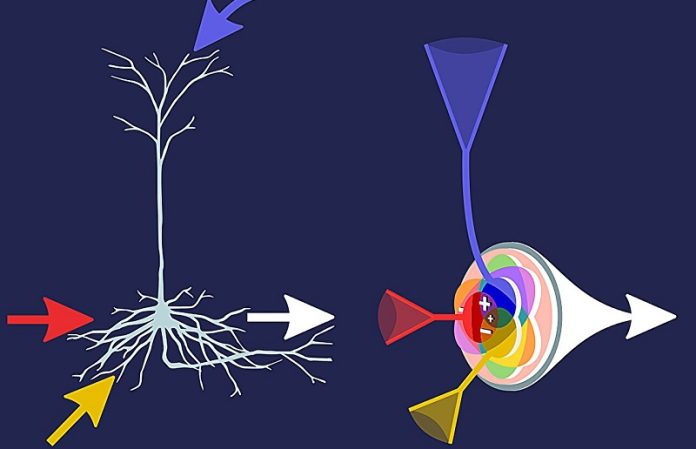
Researchers in Germany have made a big step forward in making artificial intelligence more like the human brain.
They’ve developed a new type of artificial neuron, called an “infomorphic neuron,” which can learn by itself without needing outside help.
This new technology could change how machines learn and may even teach us more about how our own brains work.
The research was done by scientists from the University of Göttingen and the Max Planck Institute for Dynamics and Self-Organization.
They created artificial neural networks using these special infomorphic neurons and shared their findings in the journal Proceedings of the National Academy of Sciences.
Just like in the human brain, artificial neural networks are made up of many small units called neurons.
These neurons pass signals between each other to process information.
However, most current artificial networks depend on external instructions to learn.
In contrast, biological neurons in our brains learn through local interactions with nearby cells. This makes the brain much more flexible and energy-efficient than any artificial system we have today.
The new infomorphic neurons behave much more like real brain cells. Each one can learn on its own by interacting with neighboring neurons in the network.
There’s no need for a central controller to guide the learning process. These neurons decide for themselves what information is important and how to respond to it.
The scientists were inspired by pyramidal cells in the cerebral cortex, which are known for learning from nearby signals.
Using this idea, they programmed their artificial neurons to follow simple, easy-to-understand goals. The learning process was focused on each individual neuron rather than the whole network.
To help the neurons learn better, the team used a new mathematical method based on information theory. This method allowed each neuron to decide whether it should copy what its neighbors are doing, work together with them, or specialize in a unique task.
As a result, each neuron figured out how to best contribute to the network’s overall goal.
By letting artificial neurons learn on their own, this research could lead to smarter, more efficient AI systems.
At the same time, it may also give scientists new insights into how learning works in the human brain. This exciting work shows how close we are getting to building machines that can learn and adapt in ways that are truly brain-like.



